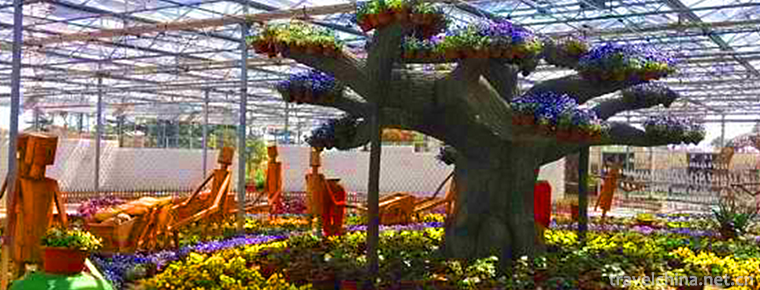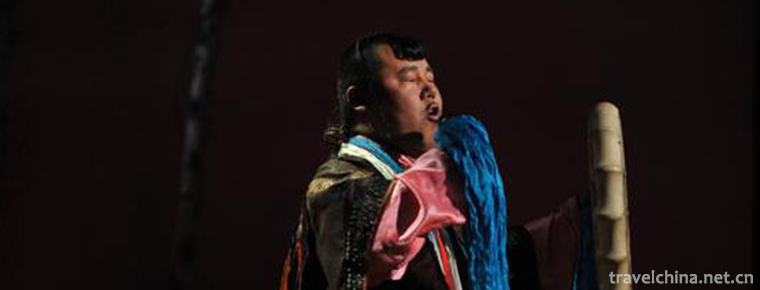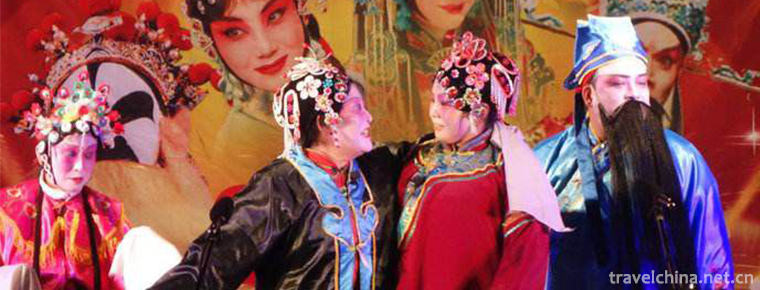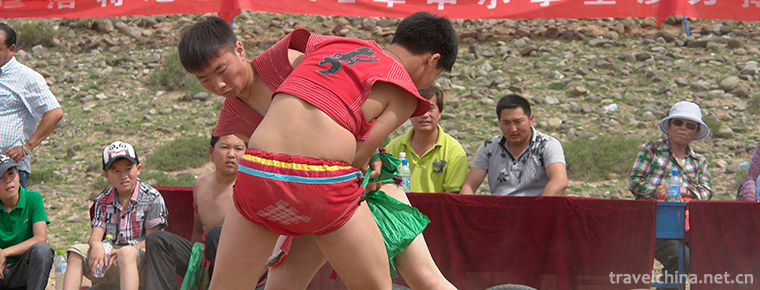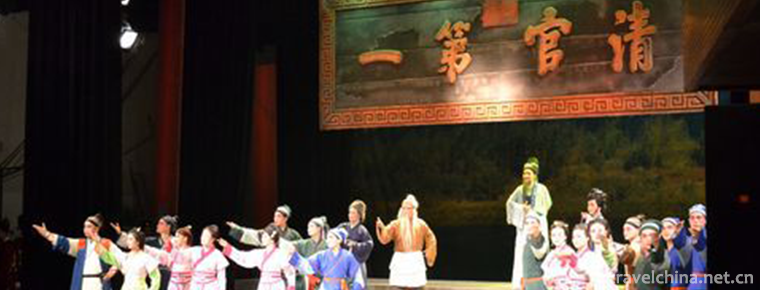Hainan opera Qiongju Opera
Hainan opera Qiongju Opera
Qiongju Opera, also known as Qiongzhou Opera and Hainan Opera, is a local folk opera art in Hainan Province of China. Qiongju Opera is one of the branches of Southern Opera. It mainly uses Hainan dialect as the language of opera. Therefore, the popular area is limited to Hainan Island and between Guangdong and Guangdong. Qiongju Opera is one of the local cultural symbols. It is believed that it has a long history, but its actual origin is difficult to know.
In June 2008, Qiongju Opera declared by Hainan Qiongju Theatre and Haikou City was listed in the second batch of national intangible cultural heritage list with the approval of the State Council.
Heritage serial number: 731 IV-130.
historical origin
origin
The origin of drama has always been an interesting topic in the history of world culture. Compared with Western drama, although Chinese opera does not originate directly from religious rituals, and its history is not as long as western drama, its origin is more complex and difficult, and there are still different opinions. As one of the Chinese opera genres, the origin of Qiongju can only be traced back to the original Qingyuan of Chinese opera.
First, "imitation theory" is represented by "Hainan Island Chronicle". "Drama is in Hainan, and in the Yuan Dynasty, there was a wooden troupe singing, from Chaozhou. In the middle of the early Ming Dynasty, the Tu people imitated it, and the Tuju opera flourished. That is to say, Qiongju is the imitation of puppet show popular in the Yuan Dynasty by Hainan people in the early Ming Dynasty. In fact, this is a copy of the theory of imitation of Chinese opera. Pre-Qin "You Meng Yi Guan" and Song Puppet Opera performances were considered to be the origin of opera.
Secondly, the adherents of "foreign theory" are mostly old artists of Qiongju Opera. Fan Jingle, an old artist in Yacheng, said, "Qiongzhou local opera was originated from Fujian, and its predecessor was Zaju. Yazhou people used to call Qiongju Opera Southern Fujian Opera and Qiongzhou Opera. Qiongdong veteran artist Li Douguang said: "Qiongju originated from Zhengyin Opera in Chaozhou. Later, after learning Chaozhou Opera, Qiongyin Opera was sung in literary style, while Wuxi Opera contained Mandarin." On the issue of the origin of Chinese opera, some people once thought that there was no Chinese opera at all. It was after the influence of Sanskrit opera from India in the Han Dynasty that Chinese opera came into being.
Third, "Aboriginal theory", which has a considerable influence in the field of Qiongju Opera. The author clearly put forward this theory is Cen Jiawu, who wrote the article "An Introduction to the Drama of the Han Dynasty in Hainan". He believes that Qiongju Opera originated from local folk songs in Hainan and is a native art. There are many people who support this statement, and think that the "no middle board, that is, no Qiongju opera" circulated in the Qiongju opera circle is the evidence of this statement. They believe that as the core of Qiongju Opera, "Zhongban" precedes Qiongju Opera, and its source is Hainan folk songs. Chen Zhiye's "Brief History of Qiongju Opera" holds that "after the emergence of Hainan local opera, according to the characteristics of Hainan's voice, the music aria of Liyuan Opera was issued and absorbed the local folk song minor, eight tones of singing and dancing, and even abandoned the tune plate, leaving only the rolling tone part, thus gradually showing the local color." That is to say, first there are Hainan local operas, then there are local operas to absorb and transform Yiyang operas such as Liyuan opera.
4. "Religious theory". When I wrote this book, I had investigated the origin of Qiongju opera to Qiongju fans many times. They almost had the word "Qiongju comes from Taoism". This view is actually Wang Guowei's "wizard theory". In the Textual Research of Song and Yuan Opera, Wang Guowei pointed out that "later generations of drama should come from witchcraft and excellence". "The difference between sorcery and superiority: sorcery is the God of music, while superiority is the man of music; sorcery is mainly singing and dancing, while superiority is mainly admonishing; sorcery is the woman, and superiority is the man." He also believes that the relationship between opera and "witch" is closer than that of "excellent": "Although the prosperity of witchcraft was in the reign of the emperor, the prosperity of HaoYou was far behind." "Witchcraft", in Shuowen Jiezi, is interpreted as "Zhu Ye, female competent things invisible to dance, god-falling person also." Although the viewpoint that Qiongju Opera originated from Taoism lacks strong argument, it must not be ignored.
Although there are some reasons for the four views on the origin of Qiongju Opera, they are not necessarily very accurate. Just like the origin of Chinese opera, the occurrence and formation of Qiongju can not simply be attributed to a certain element, but should be understood from the multi-cultural background of the impact and role of various elements. In fact, even in the period when Chinese opera has come to maturity, Hainan Island in Bian'an corner still does not know what drama is. Su Shi, with his concise poetry language, provided us with the historical facts of the existence of ballads and dances in Hainan in the Northern Song Dynasty. Su Shi's poem says, "Old Ye has sung a half-year-old song, except for books, he wants to banish his ministers back." Weng Fanggang of the Qing Dynasty wrote a poem about Su Shi's departure from Dayan: "Li Ge Man Dance Zhu Gonggui." "Wild Song", "Li Song" and "Barbaric Dance" were enough to show that there were only songs and dances but no dramas in Hainan at that time.
Hainan has drama (gongzi opera), the earliest should also be in the late Song Dynasty and early Yuan Dynasty. Golden soldiers descended southward and the Yuan Dynasty was established, which increased the number of immigrants who came to Qiongzhou to escape the war. Among the mainland immigrants, puppet performers of wandering rivers and lakes are neglected. Simple props and easy-to-master performing arts make puppet show easy to fall on Hainan Island.
Puppet show originated in Kaifeng in the Northern Song Dynasty, then flowed into Linan. When the Southern Song Dynasty was dying, it drifted to southern Fujian with artists from rivers and lakes. Finally, it passed through the Qiongzhou Strait and came to Hainan Island through Eastern Guangdong. It is difficult to know the form of puppet show which was popular in Hainan Island at that time. However, from today's Wenchang and Qiongshan areas, puppet shows are still used to worship ancestors and to marry and funeral. It can be seen that puppet shows at that time were nothing more than rewarding gods and entertaining people. However, the puppet show at that time was definitely different from the present puppet show in Hainan. The former is a part of the Zaju of Song and Yuan Dynasty, while the latter is a component of Qiongju culture. Its language, singing, acting and Gong and drum are the same as Qiongju.
It is the fact that puppet shows were popular in Yuan Dynasty that Qiongju Opera originated from the theory of "imitation" of puppet shows. "Hainan Island Records" argues that "the local opera troupe of today calls the wooden troupe a teacher's history." Before Qiongju Opera came into being, Hainan people prayed for peace, mainly by carrying songs and dancing "Nuo". After entering Hainan, "Wood Class" replaced the original singing and dancing and became the main form of "Zhai" for Hainan people. Because of the close relationship between the origin of drama and religion, people mistakenly think that the object of Qiongju is puppet show. According to the law of drama occurrence, we can only say that puppet play has an important influence on the formation of Qiongju Opera, but it is not the origin.
Secondly, let's look at Qiongju opera's "foreign theory". Zawanli, Hainan's appearance is only later than puppet show. Around the middle of the Ming Dynasty, there was a "Zaju" performance in Hainan. Ming Dynasty "Zhengde Qiongtai Zhi" said: "In the spring, Fuwei Shengfu went to the Eastern Suburb Yingchun Hall, and Wuyi did Zaju each."
May "On the eleventh, the guard's office dressed up as Guan Wang Hui." "Fuwei" and "Wei Suo" were the military fortress of the Yuan and Ming dynasties in Hainan. So far, there are villages and towns named after Wei, Suo and Tun in the west of Hainan Island. Of course, it is impossible for soldiers stationed in Qiongzhou to play Zaju at a professional level. Their purpose is only to amuse themselves through the performance of zaju, so as to alleviate the suffering of their hometown in the Central Plains. Their Zaju and Song and Yuan Zaju belong to the same system, not emphasizing the accent, but emphasizing Kebai, which is a kind of drama performed in "Mandarin". Because it is performed by soldiers, this kind of zaju, which emphasizes discipline, Bai and martial arts, is called "military drama".
In addition to "miscellaneous Wanli", there are also many operas which belong to Southern Opera of Song and Yuan Dynasty. Especially from southern Fujian, Liyuan Opera, Gaojia Opera, Zhengyin Opera and Chaozhou Opera from Eastern Guangdong were widely known as "Huguang Opera" at that time. After the mid-Ming Dynasty, the businessmen from Fujian and Guangzhou who came to Qiongzhou brought the gods of their hometown to Hainan in order to ensure the safety of business and trade, and invited the theatre troupe of their hometown to perform in the Holy expectation. According to records, the commercial atmosphere in Haikou in Ming Dynasty was extremely prosperous. "The vast number of boats in Fujian berthed in Baishajin, often with Huguang opera singing, all night long." Hans in Hainan originally came from southern Fujian and Eastern Guangdong, so these performances were very popular.
Foreign artists not only perform, but also set up classes and museums to collect and pass on art, which trained Hainan's earliest drama heirs. "Haikou Geographic Records" said: "Dingan County has always been the home of Tuju, Fujian, Chaozhou teach theatre teachers have come to teach and settled down. Cen Jiawu, who advocated that Qiongju Opera originated from Hainan ballads, also said: "In 1932, the author visited Wu Fafeng, an old writer of Hainan local opera. According to the cloud, the original Hainan local opera was indeed singing Chaozhou four-character board, and the narrative style of today's local opera also used the four-character board." There is no doubt that Qiongju opera is closely related to the dramas circulated in southern Fujian and Eastern Guangdong.
However, even if mainland theatre artists set up libraries in Hainan to teach operas, they did not teach later Qiongju operas. At that time, Hainan Island was actually an experimental theatre for all kinds of operas. Imitation is not creation. There will be no new drama to imitate any kind of "foreign" drama. Only from the actual life of Hainan people and according to the habits that Hainan people like to hear and enjoy, can "foreign" dramas such as puppet show, Zhengyin opera, Liyuan opera, Gaojia opera and Chaozhou opera introduced into Hainan be combined with local dialects, folk songs and dances in Hainan, and the comprehensive distribution of various original vocal tunes undergo a long historical evolution and artistic practice, can they be formed. Local drama - Qiong Opera. Qiongju opera can not be entirely "foreign".
Development
During the five years (1740) to the fifty-eighth year (1793) of the Qianlong reign of the Qing Dynasty, the clubs of Fujian, Gaozhou, Chaozhou and Wuyi (Nanhai, Panyu, Foshan, Jiangmen and Xinhui) were successively built in Haikou. Fixed stone stage was built in front of these clubs, and local troupes were recruited to perform in Haikou every year. Some theatre troupes also have disciples who teach subjects, while some artists have settled in Hainan Island. For example, during the Guangxu period (1875-1908), the ancestor of the Qiongju opera named Jinghuang Kuangsheng, was the follower who settled down in Hainan during the Qianlong period. These foreign theatres have played a role in promoting the development of local opera, making it gradually mature as a performing art.
The period from Xianfeng (1851-1861) to Guangxu was a period of prosperity and great change of Qiongju Opera. After the failure of the Taiping Heavenly Kingdom Revolution, Cantonese opera artists were persecuted by the Qing government and flowed into Hainan Island. They made friends with Qiongju opera artists. Some set up science classes and teach operas, and some interluded operas, which played a great role in promoting the prosperity of Qiongju opera. At this time, the tunes of Erhuang and Bangzi in Cantonese opera, as well as 18 new and old "Jianghu" books, were absorbed by Qiongju opera. On the basis of these tunes, Qiongju opera created "Hainan tune" and other tunes, which gradually transformed Qiongju opera from the tune to the tune, and abandoned the original Gong and drum music, ditty and bangqiang.
After the May 4th Movement, under the influence of the Civil Opera, Qiong dramatists Wu Fafeng and Zhang Lujin organized the Qiongya Earth Opera Improvement Society and produced progressive and novel dramas such as "Save the Nation Movement", "New Marriage" and "Province-Port Strike". More than ten other groups also produced a number of dramas with patriotic ideas, such as "Zhengqi Song" and "Peach Blossom Fan". Mulan Enlisted in the Army, etc. During this period, there were reforms in music and stage art. After 1927, Qiongya Tuju Improvement Society was disbanded. Under the influence of capitalism commercialization, some classes competed to cater to low-level interests with absurd content and low-level interesting performances, resulting in its gradual loss of its original characteristics. After the outbreak of the War of Resistance Against Japan, many classes and societies went into exile overseas. There were only one large-scale civil and military class and several small and medium-sized (specialized theatre) groups on the island.
After the founding of the People's Republic of China, under the guidance of the Party's policy of "letting a hundred flowers blossom, weeding out the old and bringing forth the new", Qiongju Opera gained new life and made great progress. In early 1950, there were only seven theatre troupes on the island. By 1952, discrete artists returned. Returning to the stage, more than 20 private theatre troupes have been set up in each county and city, and normal performance activities have been carried out. In 1953, the movement of changing drama, people and system was carried out, the class ownership system was abolished, and the artists were masters of their own affairs. Their social status was valued and improved.
At the same time, after eliminating the bad habits of "all-night opera" and "outline opera", on the one hand, actively rehearse the excellent operas recommended by the central and provincial governments, on the other hand, dig out and arrange the excellent traditional operas and create and adapt the excellent historical and modern operas, Qiong opera has a new stage appearance. In 1955, professional theatre troupes were registered. After reform and rectification, the troupes were assigned to the leadership and management of the people's governments of counties and cities. In 1956, the Guangdong Qiong Opera Troupe was founded in Guangzhou. In 1959, it was reorganized and expanded to establish the Guangdong Qiong Opera Theatre. Meanwhile, the whole region was reorganized and the city and county Qiong Opera Troupes were established. In early 1960, Hainan Art School was founded (later renamed Hainan Qiongju School). In addition, training courses of various scales have been held to train new talents of Qiongju Opera. The new generation of artists of Qiongju Opera and the older generation of artists work hand in hand. After a series of organizational construction, sound organization work and management improvement, Qiongju art has made considerable progress. During this period, excellent historical dramas and modern dramas such as Red Leaf Poems, Red Detachment of Women and Qin Xianglian were sorted out successively. In the aspect of dance art, the system of choreography and script-based rehearsal was established.
During the "Cultural Revolution" from 1966 to 1976, most of the Qiongju Opera Troupes were demobilized. The School of Qiongju Opera was suspended, the opera institutions were paralysed, and the artists were either delegated to work, or forced to transfer, or repatriated to the countryside. All kinds of precious artistic materials collected in the past ten years after the founding of the People's Republic of China have been destroyed.
Traditional drama
Qiongju Opera has a rich artistic heritage. Its traditional repertoire is divided into three parts:
One is the literary opera (mainly singing), which originates from Yiyang tune and is mixed with Siping and Qingyang tunes. It belongs to the Qupai system. Rolling singing is developed and has a helpful tune. For example, there are more than 800 records of Huaiyin and Pipa.
Secondly, there are more than 400 historical and mythological novel plays such as "Eight Immortals Celebrating their birthday", "Six Kingdoms Fengxiang", "Ancient City Club", "Single Sword Club" and "Three Kingdoms", "Water Margin", "Xue Jiazhuan", "Yang Jia Jiang" and "Feng Shen Romance".
Thirdly, Civilization Opera, also known as Fashion Qipao Opera, has more than 130 repertoires such as "Save the Nation Movement", "Provincial and Port Strikes", "Valley Blue", "Broken Intestine Grass", "Autumn Death", "Cause of Laughter" and so on.
After liberation, more than 1,500 ancient and modern dramas have been sorted out, adapted, created and transplanted. There are also a number of outstanding plays that have been performing for a long time, such as "Poems on Red Leaves", "Zhang Wenxiu", "Souyuan", "Golden Chai with Dog Titles" and so on. These plays have moving stories, easy to understand and philosophical lyrics.
Current situation of inheritance
After the Third Plenary Session of the Eleventh Central Committee of the Communist Party of China was held in 1978, Qiongju Opera got on the right track. The theatre and theatre troupes in various cities and counties gradually resumed their organizational structure, excellent traditional operas were re-staged, and opera organizations were successively restored. The young actors trained by Qiongju School have gradually become the backbone of the new generation of Qiongju Opera. Drama creation and research work has been carried out normally. New harvest. In 1982, the Guangdong Qiong Opera Troupe of China visited Singapore and Thailand to perform and received good reviews. Since then, Guangdong Qiong Theatre, Haikou Qiong Opera Troupe, Hainan Youth Qiong Opera Troupe and Hainan Qiong Opera Troupe have visited Singapore, Thailand, Malaysia, Hong Kong and other countries and regions. Singapore Xinxing Hong Kong and Qionglian Vocal Opera Club have also visited and performed successively. The artistic exchanges between Qiong Opera and Qiong Opera Troupes in Singapore, Malaysia, Thailand and Hong Kong have become increasingly frequent. There are 17 professional Qiong Opera Troupes (Academies) in Hainan Province. There are nearly 100 amateur theatre troupes in counties, towns and villages.
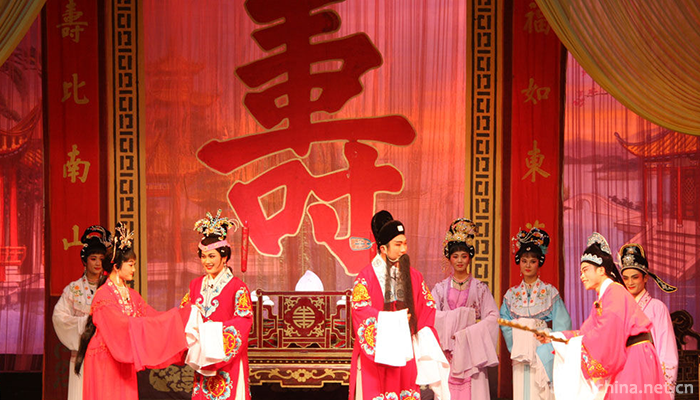
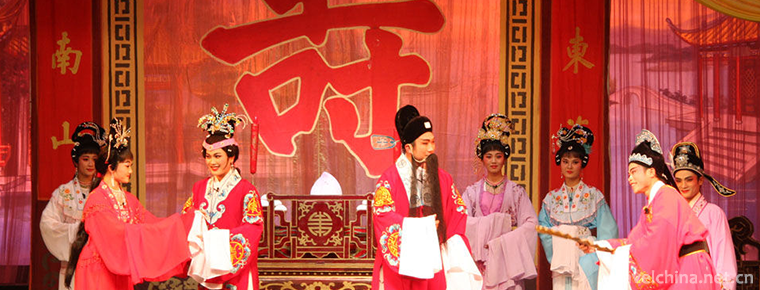
-
Shanghai Metropolitan Vegetable Garden
Shanghai Metropolitan Vegetable Garden is located on the Bank of Hangzhou Bay, Bay Town, Fengxian District. It is about 50 kilometers away from the center of Shanghai
Views: 312 Time 2018-12-19 -
Legend of Meng Jiangnu
Meng Jiangnu's story, as one of the four love legends in ancient China (the other three are Niulang and Zhinu, Liang Shanbo and Zhu Yingtai, and The Legend of White Snake), has been widely circulated
Views: 279 Time 2018-12-23 -
Anbang River National Wetland Park
Anbang River National Wetland Park is built on the basis of Anbang River Provincial Wetland Nature Reserve, which is located in Shuangyashan City, Heilongjiang Province
Views: 150 Time 2019-01-02 -
Narati Scenic Spot
Narati Tourist Scenic Area, located in Xinyuan County, Xinjiang, is located in the hinterland of Tianshan Mountains, the eastern end of the Ili Valley, with a total planning area of 960 square kilomet
Views: 64 Time 2019-02-07 -
Yinghu Scenic Area
Yinghu, a national AAAA-level tourist area, is located 16 kilometers southwest of Ankang City, Shaanxi Province. The total area is 102.8 square kilometers, including 77 square kilometers
Views: 173 Time 2019-03-05 -
Bru
Bru, Mongolian means throwing. Competitions are divided into two categories: long throw and accurate throw, mostly held in festive festivals. The long throw is to decide
Views: 470 Time 2019-04-04 -
Mongolian Humai
Humai, also known as laryngeal singing, double singing, multi-voice singing or Haolinchao, is a singing method of many ethnic groups around Altai Mountains, not unique to the Mongolian people.
Views: 852 Time 2019-06-03 -
Quzi Opera
Quzi Opera, the traditional drama of Dunhuang City, Baiyin City, Huating County and Xinjiang Production and Construction Corps in Gansu Province, is one of the national intangible cultural heritage.
Views: 132 Time 2019-06-11 -
Sharipol wrestling
Shaliboer style wrestling is a national traditional sports event originally created and retained by the Weilat Mongolian people. It is one of the main sports events in the Uznada Mu Grand Event in Ala
Views: 155 Time 2019-06-12 -
Song Brocade Weaving Skills
Song brocade weaving technology, traditional handicraft in Suzhou City, Jiangsu Province, is one of the national intangible cultural heritage.
Views: 92 Time 2019-06-16 -
Xinchang tune
Xinchang tune is one of the ancient opera tunes, also known as "falling out of tune", "Shaoxing high-key" and "Xinchang high-key". With Xinchang as the center, it has spr
Views: 135 Time 2019-07-06 -
Fobao ancient town
Fubao ancient town is an ancient town with a long history in Hejiang County, Sichuan Province, 42 km away from Hejiang County, Sichuan Province. It is a historical town, a famous cultural town, a tourism town, and an important business town in the junction of Sichuan, Guizhou and Chongqing. It was built in the late yuan and early Ming Dynasty, more than 600 years ago, it is named Fobao, and it is the gateway of national Fobao forest park.
Views: 151 Time 2020-10-16
